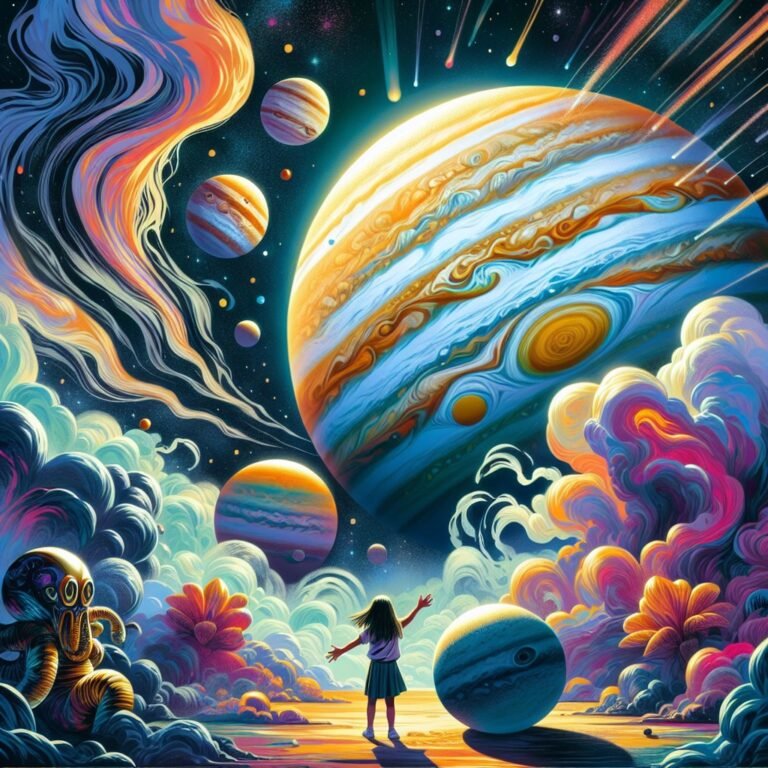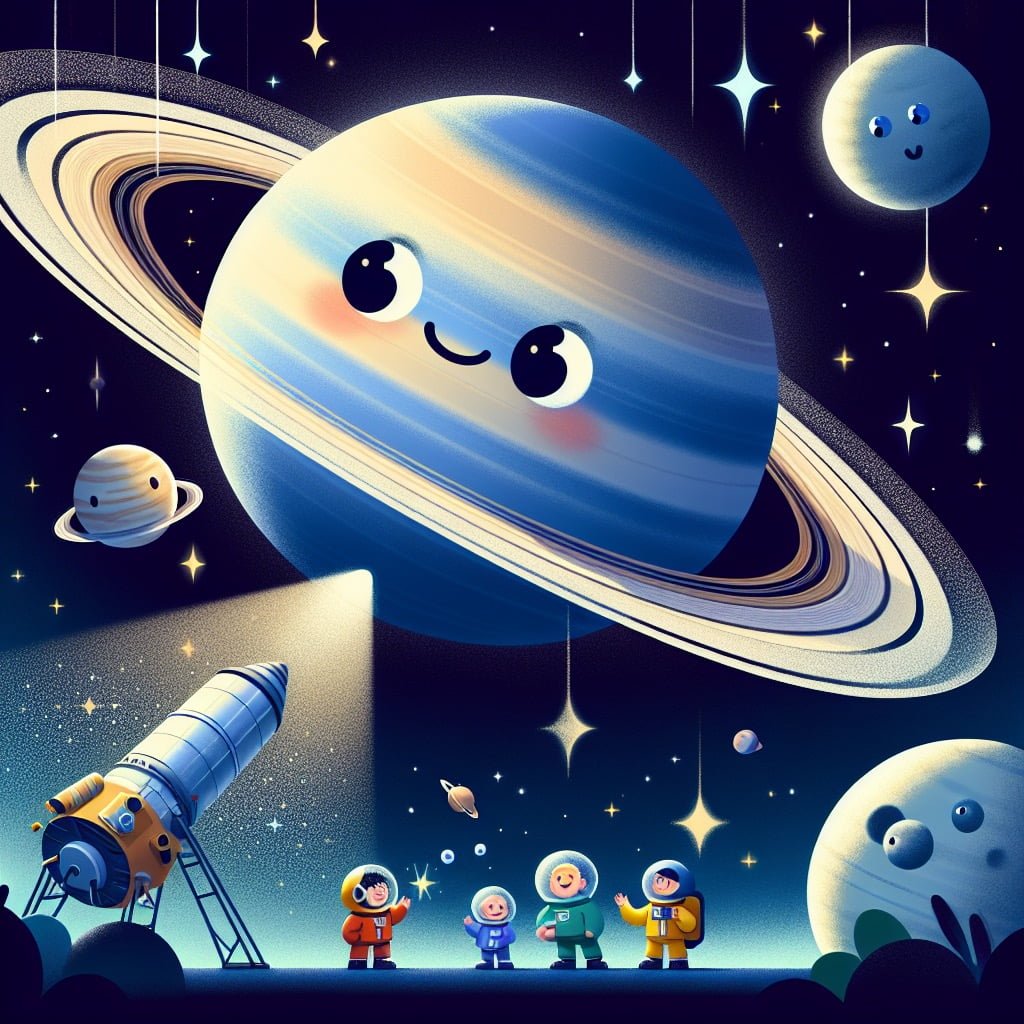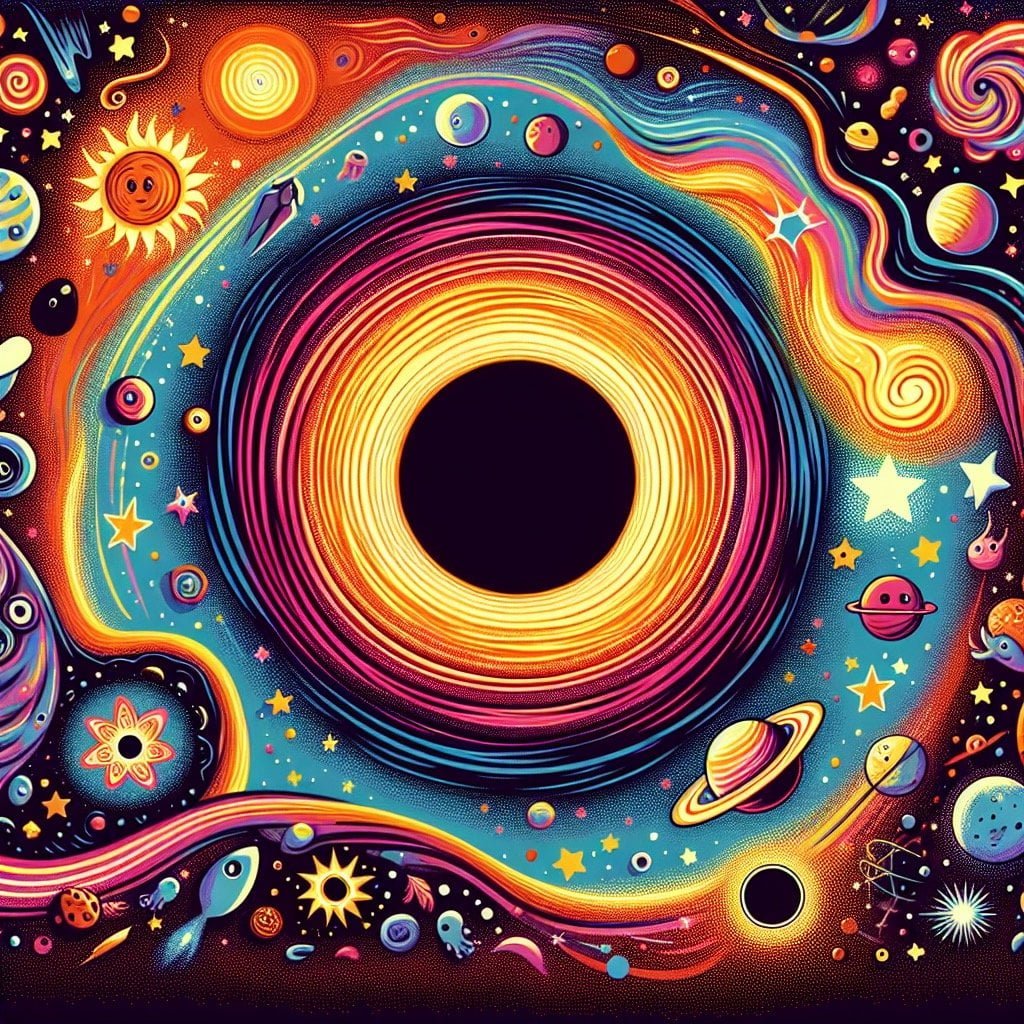Welcome to an exciting exploration of Jupiter Facts For Kids! In this captivating post, we delve into the marvels of Jupiter, the largest planet in our solar system. From its immense size and rapid rotation to its giant red spot and over 70 moons, Jupiter is a world of wonder waiting to be discovered. Join us as we unravel the mysteries of this gas giant, learn about its unique features, and explore the fascinating discoveries made through spacecraft missions. Get ready to ignite curiosity, spark imagination, and inspire a love for science and space exploration among young minds. So buckle up and get ready to embark on a thrilling journey through the captivating world of Jupiter!
Jupiter Facts For Kids
1. Jupiter is the Biggest Planet in Our Solar System

For younger kids: Jupiter is the largest planet in our solar system.
For older kids: Jupiter’s immense size makes it the largest planet in our solar system, with a diameter over 11 times that of Earth.
Detailed explanation:Jupiter, the largest planet in our solar system, is a fascinating celestial body that never fails to captivate both children and adults alike. One of the most intriguing Jupiter Facts For Kids is its massive size – it is over 11 times the diameter of Earth, making it the biggest planet in our solar system. This massive size is primarily due to Jupiter’s composition, which consists mostly of hydrogen and helium gases, giving it a low density compared to Earth.
In addition to its impressive size, Jupiter is also known for its iconic Great Red Spot, a massive storm that has been raging for centuries. This storm is so large that it could fit two Earths within its boundaries. Jupiter’s strong magnetic field also sets it apart from the other planets in our solar system, creating intense radiation belts that can be harmful to spacecraft passing by.
Jupiter’s moons are another fascinating aspect of the planet. With over 79 moons in total, Jupiter has the largest number of natural satellites in our solar system. The four largest moons – Io, Europa, Ganymede, and Callisto – are known as the Galilean moons and were discovered by Galileo Galilei in 1610. These moons have diverse surface features, including volcanic activity on Io and possible subsurface oceans on Europa.
Overall, Jupiter’s massive size, unique features like the Great Red Spot, and its numerous moons make it a truly captivating planet for kids and adults alike to learn about and explore. Its sheer size and complexity make it a wonder of the solar system, and studying it further can unlock many mysteries of our universe.
Jupiter Facts For Kids
2. Jupiter has the Fastest Rotation Speed

For younger kids: Jupiter spins really fast like a spinning top!
For older kids: With a rotation speed of about 10 hours, Jupiter has the fastest rotation of any planet in our solar system.
Detailed explanation:Jupiter, the largest planet in our solar system, is known for its impressive size and many unique characteristics. One of the most fascinating facts about Jupiter is its incredible rotation speed. Jupiter has the fastest rotation speed of any planet in our solar system, completing a full rotation on its axis in just under 10 hours.
This rapid rotation speed is due to Jupiter’s massive size and composition. As a gas giant, Jupiter is mainly made up of hydrogen and helium, which allows it to rotate more quickly than rocky planets like Earth. In addition, Jupiter’s fast rotation causes it to bulge at its equator, giving it an oblate shape rather than a perfect sphere.
The fast rotation speed of Jupiter also has other interesting effects on the planet. Its rapid spinning creates strong winds that whip around the planet, creating the iconic bands of clouds and storms that are visible in Jupiter’s atmosphere. The planet’s Great Red Spot, a giant storm that has been raging for centuries, is a result of these intense winds and the planet’s fast rotation.
Overall, the fact that Jupiter has the fastest rotation speed of any planet in our solar system is just one of the many fascinating Jupiter Facts For Kids that make this gas giant so intriguing. Its rapid rotation not only shapes its appearance and atmosphere, but also plays a key role in the planet’s unique characteristics and behaviors.
Jupiter Facts For Kids
3. Jupiter has a Giant Red Spot

For younger kids: Jupiter has a big red spot that’s like a huge storm.
For older kids: The Great Red Spot on Jupiter is a massive storm that has been raging for at least 350 years and is large enough to fit Earth inside it.
Detailed explanation:One of the most iconic features of Jupiter, the largest planet in our solar system, is its Giant Red Spot. This massive storm has been raging for centuries and is large enough to fit two or three Earths inside it. Jupiter Facts For Kids
The Giant Red Spot is actually a giant storm that has been swirling on Jupiter for at least 350 years. Its distinct red color comes from a combination of chemicals in Jupiter’s atmosphere, including ammonia and methane, interacting with ultraviolet light from the Sun. Despite its name, the spot isn’t always a deep red color, sometimes appearing more pale or even white depending on the atmospheric conditions. Jupiter Facts For Kids
Scientists believe that the Giant Red Spot is a high-pressure system, similar to a hurricane on Earth but much larger and long-lasting. The storm’s swirling winds can reach speeds of up to 400 mph, making it one of the most powerful storms in the solar system. Studying the Giant Red Spot helps scientists understand more about Jupiter’s complex atmosphere and weather patterns.
While the Giant Red Spot may be a striking feature of Jupiter, it is just one of many fascinating aspects of this gas giant planet. With its dozens of moons, intricate ring system, and massive size, Jupiter continues to captivate astronomers and space enthusiasts alike. Jupiter Facts For Kids
Jupiter Facts For Kids
4. Jupiter has Over 70 Moons
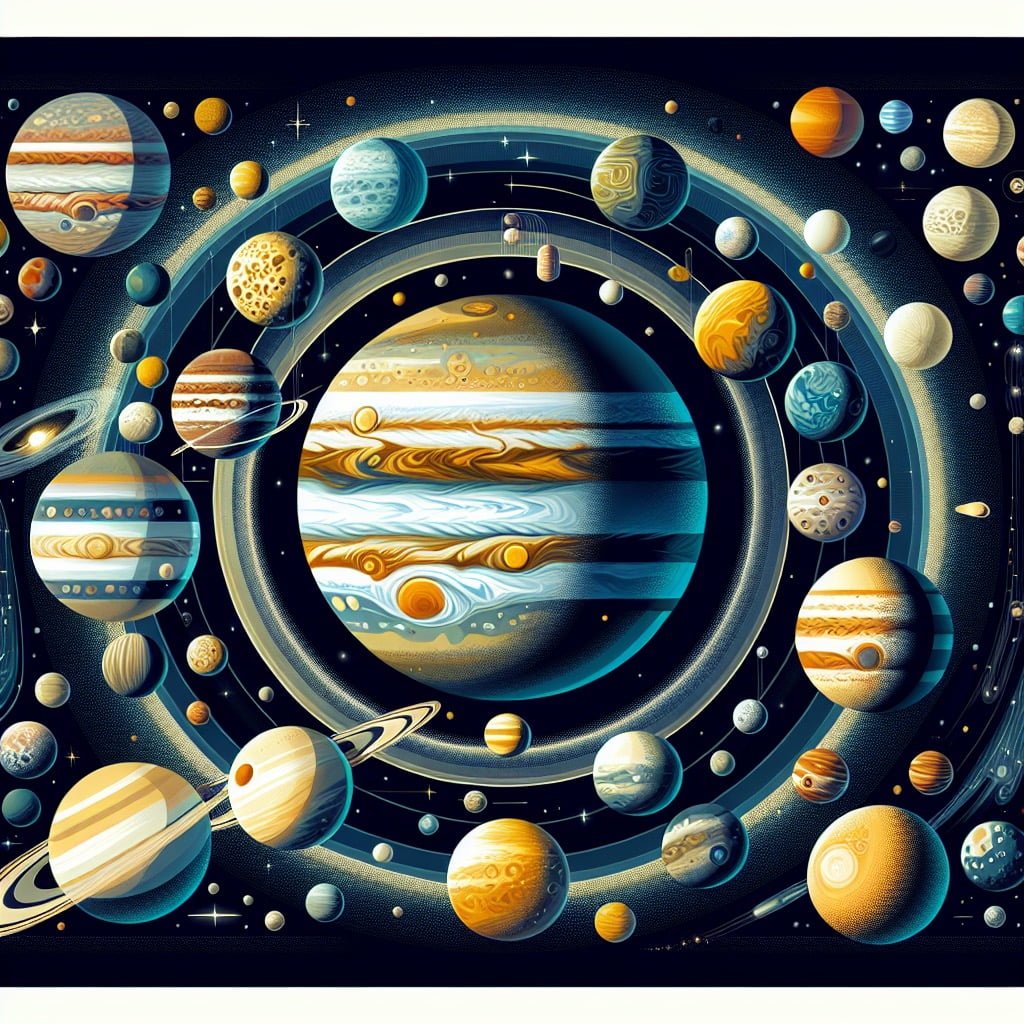
For younger kids: Jupiter has lots of moons, more than any other planet!
For older kids: With over 79 confirmed moons, Jupiter has the most moons of any planet in the solar system, including the four largest moons known as the Galilean moons.
Detailed explanation:Jupiter, the largest planet in our solar system, is truly a fascinating celestial body. One of the most intriguing aspects of Jupiter is its vast number of moons. With over 70 moons in orbit around it, Jupiter has the highest number of moons of any planet in our solar system. These moons vary greatly in size, shape, and composition, providing researchers with a wealth of opportunities to study the diverse geology and chemistry of these celestial bodies.
Many of Jupiter’s moons are relatively small and irregularly shaped, likely captured asteroids or comets that were pulled into orbit around the giant planet by its powerful gravitational pull. However, there are also several large moons orbiting Jupiter that have captured the attention of scientists and space enthusiasts alike. The four largest moons of Jupiter – Io, Europa, Ganymede, and Callisto – are known as the Galilean moons, named after the astronomer Galileo Galilei who first observed them in the early 17th century.
Each of Jupiter’s moons offers unique opportunities for scientific exploration. For example, Europa is believed to have a subsurface ocean of liquid water beneath its icy crust, making it a prime candidate in the search for extraterrestrial life. Ganymede, the largest moon in the solar system, has its own magnetic field and a complex geological history. These Jupiter Facts For Kids make studying Jupiter’s moons a captivating and rewarding endeavor for scientists and space enthusiasts alike. As our understanding of these moons continues to grow, so too does our appreciation for the complexity and diversity of our solar system.
Jupiter Facts For Kids
5. Jupiter’s Gravity is Stronger than Earth’s
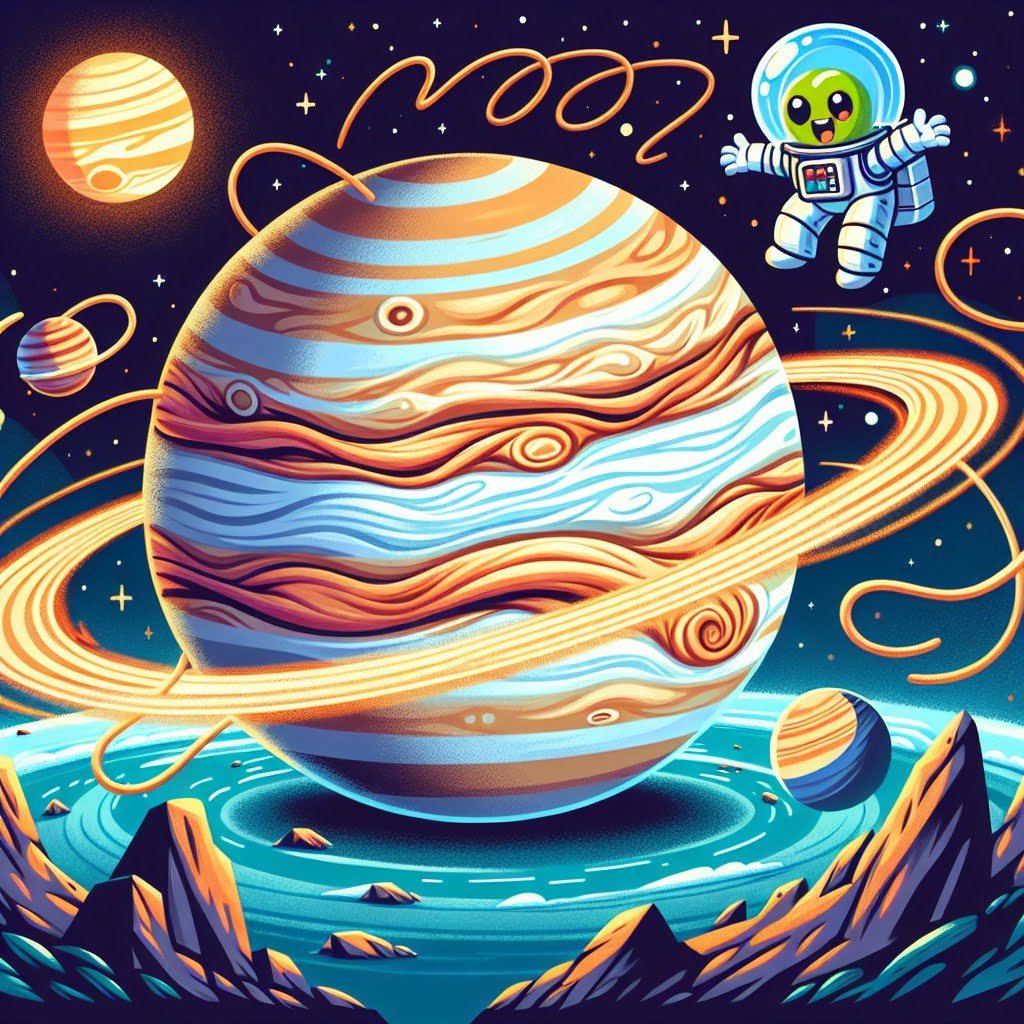
For younger kids: If you visited Jupiter, you would feel much heavier!
For older kids: Jupiter’s immense size and mass give it a strong gravitational pull, making you feel over twice as heavy as you do on Earth.
Detailed explanation:Jupiter, the largest planet in our solar system, is a fascinating celestial body that never fails to capture the curiosity of both kids and adults alike. One of the most intriguing Jupiter Facts For Kids is that its gravity is actually stronger than Earth’s. But what does this mean exactly?
Gravity is the force that pulls objects towards each other. The strength of this force is dependent on the mass of the object. Jupiter is a gas giant with a mass that is 318 times greater than Earth’s. This immense mass results in a much stronger gravitational pull on Jupiter compared to Earth. This means that if you were to stand on the surface of Jupiter, you would feel much heavier than you do on Earth. In fact, your weight on Jupiter would be 2.5 times greater than your weight on Earth.
The stronger gravity on Jupiter also has other interesting implications. For example, it affects the planet’s atmosphere, causing it to be much thicker and denser than Earth’s. Jupiter’s gravity is so strong that it is able to hold onto 79 moons, the largest of which is Ganymede, which is even larger than the planet Mercury.
In conclusion, the fact that Jupiter’s gravity is stronger than Earth’s is not only a fascinating tidbit of information, but it also helps us appreciate the complexity and diversity of our solar system. Next time you gaze up at the night sky, take a moment to marvel at the sheer power of Jupiter’s gravitational pull.
Jupiter Facts For Kids
6. Jupiter is Made Mostly of Gas
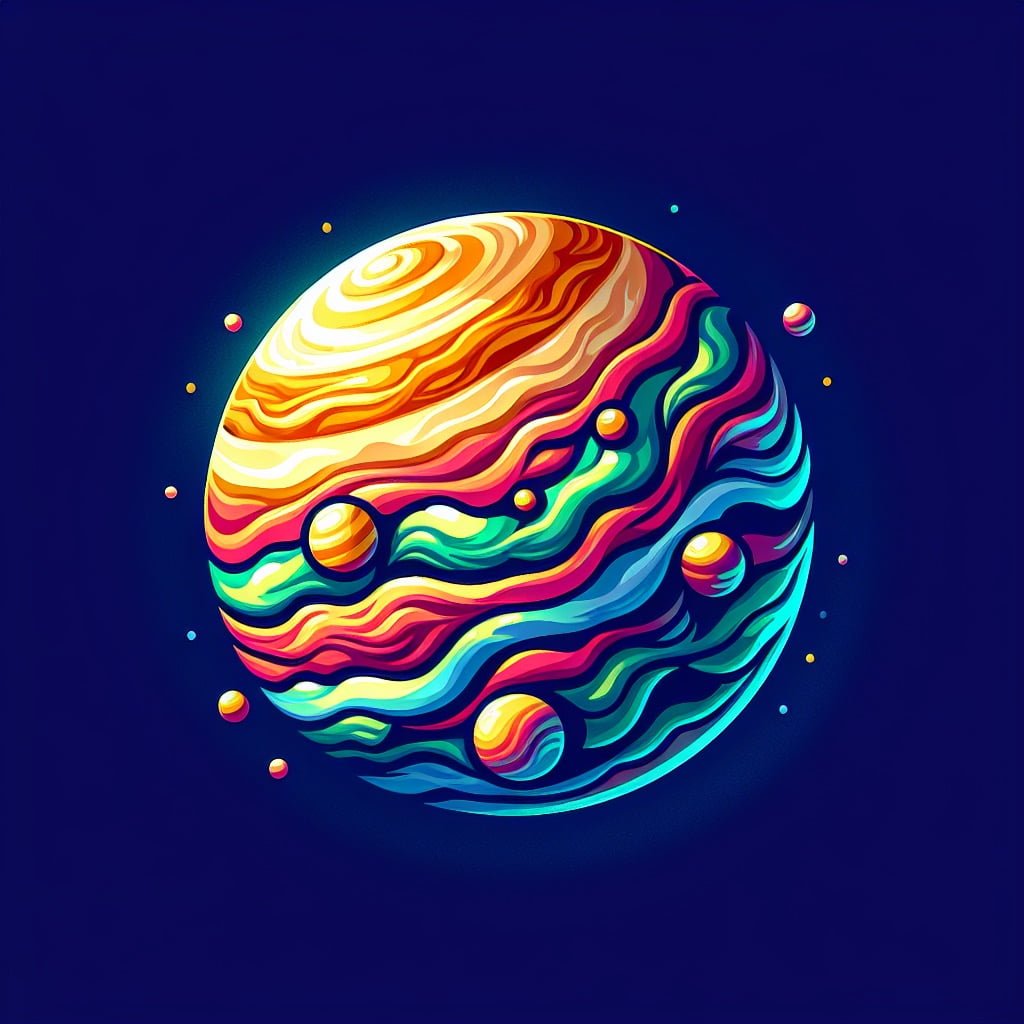
For younger kids: Jupiter is not a solid planet like Earth, it’s made of gas.
For older kids: Jupiter is a gas giant composed mostly of hydrogen and helium, with no solid surface like Earth.
Detailed explanation:Jupiter Facts For Kids might be surprising to some, considering that it is often referred to as a planet in our solar system. However, Jupiter is actually composed mostly of gas, with a relatively small solid core at its center.
The gas giant is primarily made up of hydrogen and helium, similar to the composition of the sun. In fact, if Jupiter had been around 80 times more massive, it could have become a star itself. Although Jupiter may appear solid from afar, it is actually a massive ball of swirling gases, with no solid surface to stand on.
One interesting Jupiter Facts For Kids is that the gas giant has a thick atmosphere that is made up of different layers. The outermost layer, known as the cloud layer, is where the colorful bands and belts that we see in Jupiter’s atmosphere are located. These bands are made up of ammonia crystals and other compounds, which give Jupiter its distinct appearance.
Another fun fact about Jupiter is its Great Red Spot, a massive storm that has been raging for centuries. This storm is so large that it could fit three Earths inside of it. The high winds in Jupiter’s atmosphere help to keep the Great Red Spot active, along with other smaller storms that dot the planet.
Overall, Jupiter’s composition as a gas giant sets it apart from the rocky planets in our solar system. Its unique features and composition make it a fascinating subject of study for scientists and astronomers alike. Jupiter Facts For Kids are truly out of this world!
Jupiter Facts For Kids
7. Jupiter’s Rings are Very Faint
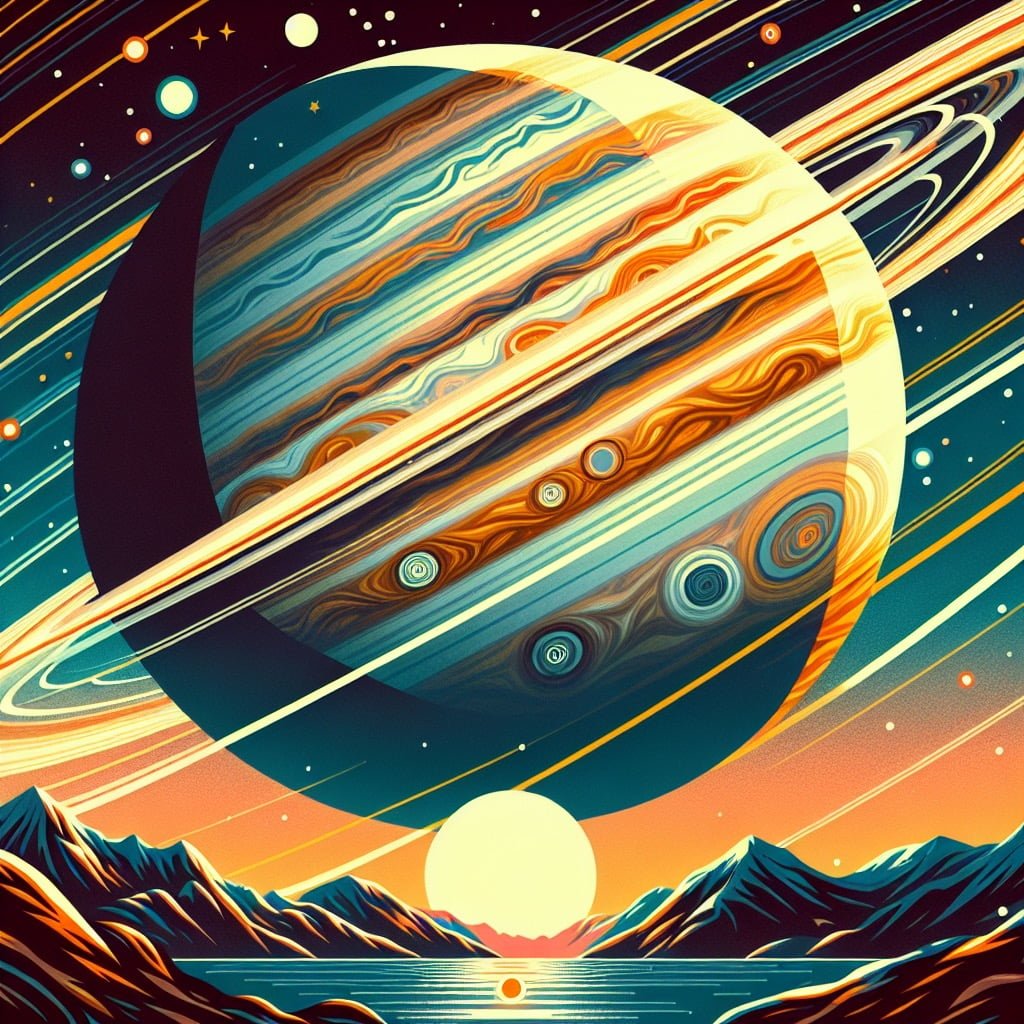
For younger kids: Jupiter has rings like Saturn, but they are hard to see.
For older kids: Jupiter has a faint ring system made up of tiny dust particles, which is much harder to detect compared to Saturn’s prominent rings.
Detailed explanation:Jupiter’s rings are very faint compared to the prominent rings of other gas giants, such as Saturn. These rings are mostly made up of tiny dust particles and debris, which scatter sunlight in a way that makes them difficult to see from Earth. The rings were first discovered in 1979 by the Voyager 1 spacecraft, and since then, they have been studied extensively by subsequent missions.
One of the most interesting Jupiter Facts For Kids is that these rings are constantly changing. The debris in the rings is believed to be continuously replenished by micrometeoroid impacts on Jupiter’s moons, particularly the small inner moons close to the planet. This constant influx of new material results in a dynamic and ever-evolving ring system that scientists are continually monitoring and studying.
Despite their faint appearance, Jupiter’s rings play an important role in the planet’s overall environment. They interact with Jupiter’s magnetosphere, affecting the planet’s magnetic field and radiation belts. They also provide valuable insights into the composition and history of the objects in Jupiter’s orbit.
In conclusion, while Jupiter’s rings may not be as eye-catching as those of Saturn, they are a fascinating and important feature of the planet’s system. Their faint appearance belies their dynamic nature and their contributions to our understanding of Jupiter and the larger solar system.
Jupiter Facts For Kids
8. Jupiter is the Brightest Object in the Night Sky

For younger kids: You can see Jupiter shining brightly in the night sky!
For older kids: Jupiter is often one of the brightest objects in the night sky, easily visible to the naked eye.
Detailed explanation:Jupiter Facts For Kids: Jupiter, the largest planet in our solar system, is indeed the brightest object in the night sky after the Moon. This gas giant is so massive that it reflects a significant amount of sunlight, making it easily visible even from a great distance. In fact, Jupiter is often mistaken for a star due to its intense brightness.
One of the reasons for Jupiter’s brilliance is its proximity to Earth. While it is not the closest planet to us, Jupiter’s size and composition allow it to reflect a considerable amount of sunlight back towards us. This, combined with its position in the sky, makes it stand out as a dazzling point of light when the sun sets.
Another factor that contributes to Jupiter’s brightness is its impressive size. Being more than 11 times wider than Earth, Jupiter has a large surface area for light to bounce off of and reach us here on our planet. Its thick atmosphere, made up primarily of hydrogen and helium, also plays a role in enhancing its reflective properties.
For kids who are interested in stargazing, Jupiter is a great starting point. With just a pair of binoculars, they can observe Jupiter’s four largest moons – Io, Europa, Ganymede, and Callisto – known as the Galilean moons. These moons are easily visible from Earth and provide a fascinating glimpse into the complex system of Jupiter.
Overall, Jupiter’s status as the brightest object in the night sky is a testament to its impressive size, composition, and proximity to Earth. Whether viewed with the naked eye or through a telescope, this gas giant never fails to captivate viewers of all ages with its luminous presence.
Jupiter Facts For Kids
9. Jupiter Has a Unique Magnetosphere
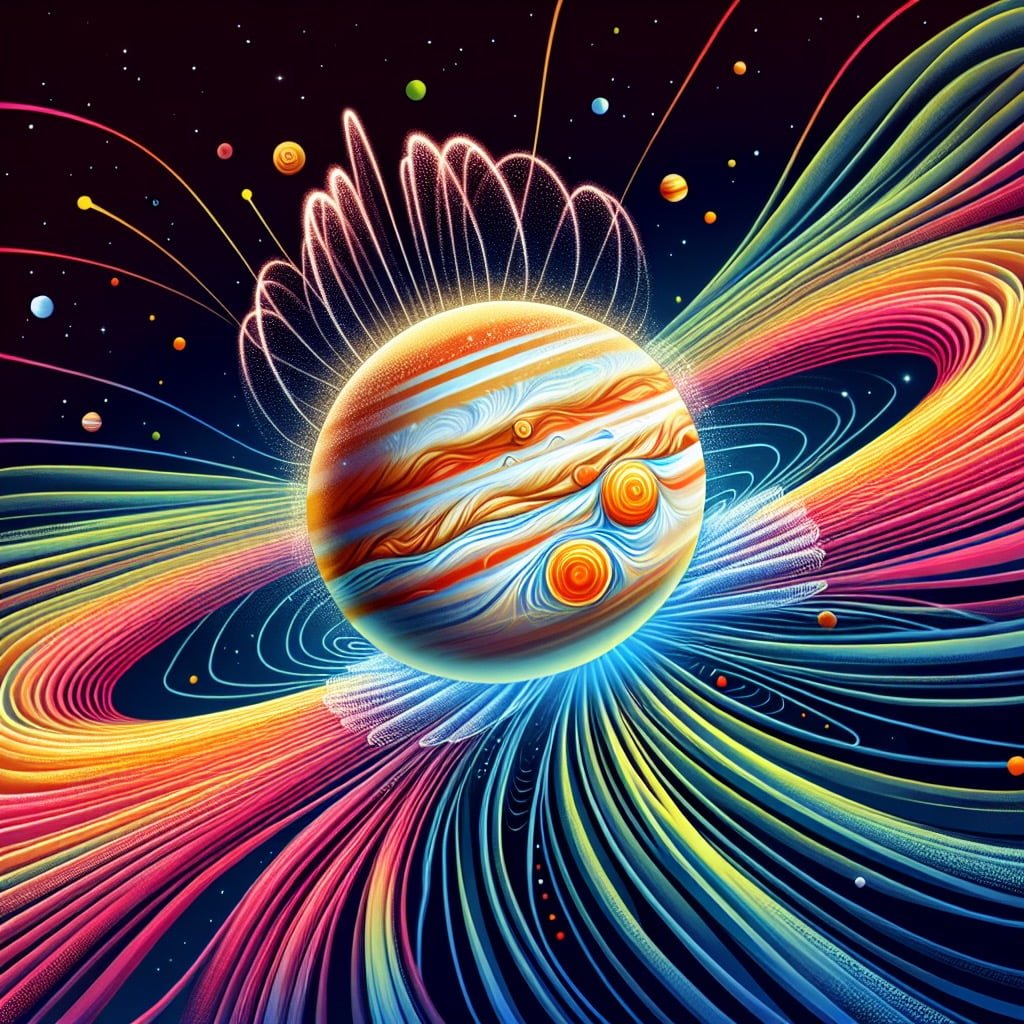
For younger kids: Jupiter has a very big invisible force field around it.
For older kids: Jupiter’s magnetosphere is the largest and most powerful of any planet in the solar system, extending millions of kilometers into space.
Detailed explanation:Jupiter, the largest planet in our solar system, is known for many unique features, one of which is its distinctive magnetosphere. A magnetosphere is the region of space surrounding a planet where the planet’s magnetic field is dominant over the interplanetary magnetic field. In the case of Jupiter, its magnetosphere is particularly special compared to other planets in our solar system.
One of the most fascinating Jupiter Facts For Kids about Jupiter’s magnetosphere is its immense size. Jupiter’s magnetosphere is the largest structure in the solar system, extending all the way to the orbit of Saturn and encompassing a volume of space larger than the entire Sun. This enormous magnetosphere is created by Jupiter’s strong magnetic field, which is 14 times stronger than Earth’s.
Another intriguing aspect of Jupiter’s magnetosphere is its interaction with the planet’s moons. Jupiter has over 70 known moons, the largest of which is Ganymede. These moons can actually interact with Jupiter’s magnetosphere, creating unique phenomena such as auroras on Ganymede caused by the moon moving through Jupiter’s magnetic field.
Studying Jupiter’s magnetosphere not only helps us understand the planet itself, but also provides valuable insight into the nature of magnetic fields and magnetospheres in general. By studying Jupiter’s unique magnetosphere, scientists can gain a deeper understanding of the processes that govern magnetic fields in our solar system and beyond. Jupiter’s magnetosphere truly is a fascinating and unique feature of this giant planet.
Jupiter Facts For Kids
10. Jupiter’s Exploration Revealed Intriguing Discoveries
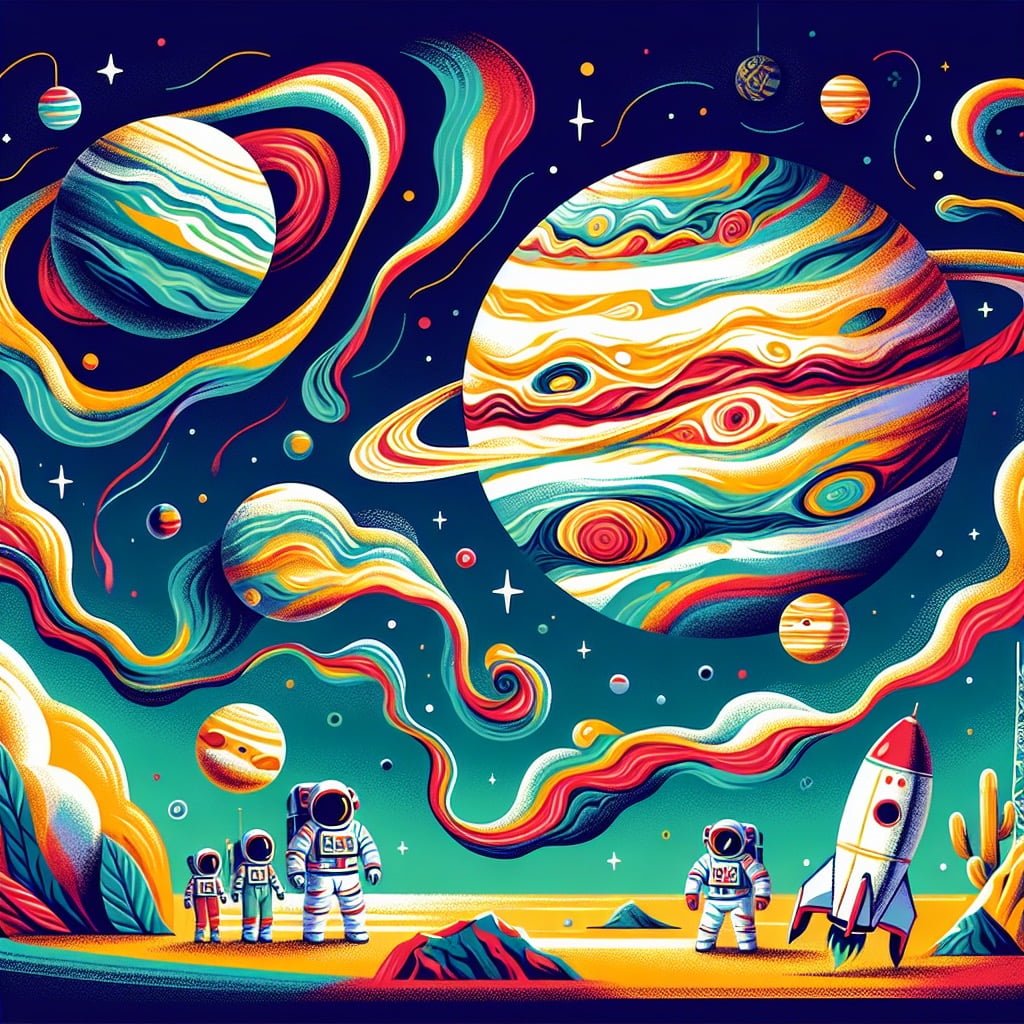
For younger kids: Scientists have sent special robots to learn more about Jupiter!
For older kids: Discoveries from spacecraft missions like Juno have revealed Jupiter’s complex atmosphere, powerful storms, and unique magnetic field, providing valuable insights into the giant planet.
Detailed explanation:Jupiter, the largest planet in our solar system, has always captivated both scientists and the general public with its immense size and its beautiful swirling clouds. However, recent exploration missions to Jupiter, such as NASA’s Juno mission, have revealed even more intriguing facts about this gas giant that are not only fascinating to scientists, but also engaging for kids who are interested in space.
One of the most exciting Jupiter facts for kids is the discovery of Jupiter’s massive magnetic field. This magnetic field is the strongest in the solar system, and it extends for millions of kilometers into space, creating a protective bubble around the planet. Scientists believe that this magnetic field is generated by electric currents within Jupiter’s liquid metallic hydrogen core. This fact not only highlights the extreme and unique nature of Jupiter, but also opens up opportunities for kids to learn about the science behind magnetic fields and how they can be generated.
Another fascinating discovery from Jupiter’s exploration is the presence of huge storms, such as the Great Red Spot. This massive storm has been raging for hundreds of years and is larger than the entire Earth. By studying these storms, scientists can learn more about atmospheric dynamics and weather patterns on other planets, providing valuable insights into Earth’s own weather systems.
In conclusion, the exploration of Jupiter has revealed a treasure trove of intriguing discoveries that not only expand our knowledge of the planet itself, but also spark curiosity and wonder in kids who are eager to learn about the mysteries of the universe. Jupiter facts for kids are not only educational but also inspire a sense of awe and wonder at the vastness and complexity of our solar system.
Did You Know?
Jupiter’s massive gravity helps protect the inner planets like Earth from dangerous asteroid impacts by attracting and absorbing many space rocks that could otherwise collide with our planet.
Summary of Jupiter Facts For Kids
If you’re a curious kid with a love for all things space-related, then delving into the incredible world of Jupiter is a must-do! Not only is Jupiter the largest planet in our solar system, but it’s also home to some of the most fascinating features and phenomena that will captivate your imagination. From its massive size that could fit all the other planets inside to its iconic Great Red Spot storm that has been raging for centuries, Jupiter is a celestial body that will leave you in awe.
But that’s not all – Jupiter is also home to over 80 moons, with the four largest known as the Galilean moons. Each of these moons offers a unique perspective on the planet, from Ganymede’s status as the largest moon in the solar system to Europa’s potential for harboring alien life beneath its icy surface. By exploring Jupiter and its moons, you can learn more about the formation and evolution of our solar system, as well as gain insights into the processes that shaped our universe.
So why should you read more about Jupiter facts for kids? Because uncovering the mysteries of this giant planet and its moons will ignite your sense of wonder and curiosity about the vast expanse of space. By learning about Jupiter’s incredible size, extreme weather patterns, and diverse moons, you’ll be inspired to delve further into the world of astronomy and exploration. So grab your telescope and get ready to embark on an exciting journey of discovery and fascination with Jupiter – the gateway to unlocking the secrets of the cosmos!
Sources and additional information for Jupiter Facts For Kids
WikipediaBritannicaNASAEuropean Space Agency (ESA)Space.comAstrophysical JournalSky & TelescopeUniverse TodaySpaceXThe Planetary SocietyAstronomy MagazineHubbleSiteNational Geographic KidsNASANational Air and Space MuseumESA KidsSpace.comThe Planetary SocietyNational Radio Astronomy Observatory (NRAO)Hayden PlanetariumSky & Telescope
